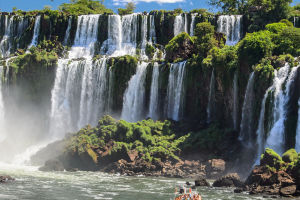Welcome Lykkers! Nestled in the rugged terrain of Altay Prefecture in Xinjiang, China, the Keketuohai Scenic Area—also known as the Irtysh Grand Canyon—is a hidden gem of breathtaking natural beauty.
This enchanting destination, characterized by its dramatic landscapes, serene rivers, and rich cultural significance, has earned the nickname "China's Yosemite."
Keketuohai Scenic Area
A Geographical Marvel
The Keketuohai Irtysh Grand Canyon is carved by the Irtysh River, the only river in China that flows into the Arctic Ocean. Located in Fuyun County, this grand canyon stretches for kilometers, boasting towering granite cliffs, expansive forests, and cascading waterfalls.
The area is part of the Altay Mountain Range, known for its unique geological formations and glacial remnants. These features have made Keketuohai a UNESCO Global Geopark, celebrated for its scientific and aesthetic value.
Natural Attractions
Keketuohai is a treasure trove of natural wonders, offering visitors a diverse range of landscapes to explore.
Irtysh River: The lifeline of the canyon, the river winds through the valley with crystal-clear waters reflecting the surrounding peaks. The serene ambiance is perfect for nature lovers and photographers.
Canyons and Cliffs: The granite cliffs of the Irtysh Grand Canyon are dramatic and awe-inspiring. Erosion and weathering have sculpted unique rock formations, including towering pillars and smooth granite domes.
Fairy Lake: A tranquil alpine lake located within the scenic area, Fairy Lake is surrounded by lush greenery and rugged peaks, making it an idyllic spot for reflection and relaxation.
Waterfalls and Rapids: Throughout the canyon, visitors can find cascading waterfalls and roaring rapids that add to the dynamic beauty of the landscape.
Cultural and Historical Significance
Keketuohai is more than just a natural wonder—it holds cultural and historical importance as well. The area was historically inhabited by nomadic Kazakh and Mongolian tribes, and their traditions and stories are woven into the fabric of the region.
In addition, Keketuohai played a vital role in China's early mineral exploration. It is known as the "No. 1 Mining Area" due to its rich deposits of rare minerals, including uranium and beryllium, which contributed to the development of China's nuclear industry. Today, a small museum within the scenic area commemorates this history.
Flora and Fauna
The biodiversity of Keketuohai adds another layer of allure. The canyon is home to a variety of plant species, including Siberian larch, birch, and wildflowers that blanket the valley in vibrant colors during the summer months.
Wildlife enthusiasts may spot animals such as argali sheep, ibex, foxes, and golden eagles. The harmonious coexistence of nature and wildlife makes Keketuohai a haven for eco-tourism.
Activities and Adventures
Visitors to Keketuohai can enjoy a range of activities that immerse them in the region’s beauty:
Hiking: Numerous trails wind through the canyon, offering options for both casual walkers and seasoned hikers.
Boating: Exploring the Irtysh River by boat allows for a unique perspective of the canyon’s grandeur.
Photography: The striking contrasts of the blue sky, green forests, and gray granite cliffs make Keketuohai a dream for photographers.
Cultural Experiences: Visitors can engage with the local Kazakh culture through traditional music, dance, and cuisine in nearby villages.
Best Time to Visit
The best time to visit Keketuohai is during late spring and summer (May to September) when the weather is mild, and the flora is in full bloom. Autumn (October) is also a fantastic time, as the canyon transforms into a palette of golden and crimson hues.
How to Get There?
Keketuohai is located approximately 200 kilometers from Altay City and can be accessed by road. Visitors can take buses or private vehicles from Altay or Fuyun County to reach the scenic area.
The Keketuohai Irtysh Grand Canyon is a captivating blend of natural beauty, cultural richness, and historical significance. Whether you’re an adventurer seeking breathtaking hikes or a traveler eager to immerse yourself in the serenity of nature, Keketuohai promises an unforgettable experience. This lesser-known destination in Xinjiang is a testament to the diverse and awe-inspiring landscapes that China has to offer.


